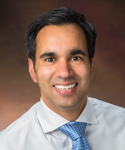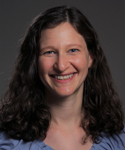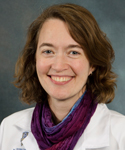 From pediatric care to fellowship training, rheumatologists and people with rheumatic diseases face challenges on many fronts. There are not enough pediatric rheumatologists to reach all children with rheumatologic diseases. And for children with access to pediatric rheumatology care, patients who aren’t supported in their transition to adult care are getting sicker. Healthcare disparities, including social, economic and environmental disadvantages, are leaving some rheumatology patients without proper care. In rheumatology fellowship training programs, gaps in education have left some rheumatologists in need of a deeper understanding of basic science and clinical research methodologies.
From pediatric care to fellowship training, rheumatologists and people with rheumatic diseases face challenges on many fronts. There are not enough pediatric rheumatologists to reach all children with rheumatologic diseases. And for children with access to pediatric rheumatology care, patients who aren’t supported in their transition to adult care are getting sicker. Healthcare disparities, including social, economic and environmental disadvantages, are leaving some rheumatology patients without proper care. In rheumatology fellowship training programs, gaps in education have left some rheumatologists in need of a deeper understanding of basic science and clinical research methodologies.
On Aug. 21, the Rheumatology Research Foundation hosted the 2020 Summer Research Series . During the virtual event, four rheumatologists investigating solutions to address these practice challenges provided updates on their research, which is funded through the Foundation.
As a result of the COVID-19 pandemic, the virtual series replaced the Foundation’s annual Investigator’s Meeting, which provides Foundation-funded researchers an opportunity to learn about recent findings and research projects. The Foundation is the largest private funding source for rheumatology research and training in the U.S. It supports rheumatologists investigating practice challenges and rheumatic diseases develop new strategies to improve rheumatology training, practice and care.
Here’s a look at what each of these investigators presented and shared with The Rheumatologist about their research progress and their next steps.
A Career in Pediatric Rheumatology: Research Informs Practice
Little is known about how early career pediatric rheumatologists decide on their specialty. But the general trend is that pediatric rheumatology fellowship positions commonly go unfilled. Another fact: “We know early career pediatric rheumatologists often suffer from a lack of mentors and local role models. It’s a very small field, and many people are one of two or three pediatric rheumatologists at their institution,” says Jay Mehta, MD, MSEd, an attending rheumatologist, associate director for the Pediatrics Residency Program and director of the Pediatric Rheumatology Fellowship Program at the Children’s Hospital of Philadelphia, as well as associate professor of clinical pediatrics, Perelman School of Medicine, the University of Pennsylvania.
To better understand what influences the early career move to pediatric rheumatology, and how early career rheumatologists navigate transitions, Dr. Mehta designed a study with two primary aims:
- To understand the factors influencing pediatric residents to specialize in rheumatology to inform recruitment strategies for medical students and residents; and
- To characterize how fellow and early attending physicians navigate early career transitions to create a framework for counseling early career pediatric rheumatologists.
Dr. Mehta and colleagues are currently in the third year of this study. For the first aim, the team followed 14 of the 25 residents accepted in 2018 to the ACR Pediatrics Residents Program, conducting longitudinal interviews focused on their specialty decision-making process, perception of rheumatology, mentorship and career goals.1
From initial interviews, researchers learned that three major factors influence a fellow’s decision to choose pediatric rheumatology: their perception of life as a pediatric rheumatologist, their interest in the field and their personal experiences working with pediatric rheumatology patients. Researchers also found the fellows were influenced by mentorship; external persuasive influences, such as research; dissuasive practice limitations; and the geographic location of areas with the greatest need for pediatric rheumatologists, including rural locations.
As the team completes its final year of the study, Dr. Mehta is looking at benefits to pediatric rheumatology that can be gleaned from study interviews and leveraged for recruitment. Such benefits include job satisfaction and reasonable work hours, interest in complex immunopathology and the ability to form long-term relationships with patients.
To meet the study’s second target, researchers have followed six pediatric rheumatology fellows through their first two years of fellowship. They’ve identified common challenges, such as transitioning from a primarily inpatient residency to a primarily outpatient fellowship, the presence of impostor syndrome and going from being a highly knowledgeable senior resident to learning a new field all over again. Recognition of these challenges may help fellowship directors better prepare new fellows for the challenges they will face.
Educating Fellows about the Transition from Pediatric to Adult Care
Although the physical transition from pediatric to adult rheumatology care may seem as simple a move to a new office down the hall, the young adult patients—and their families—who are transferring to adult care may feel it’s a giant leap, according to Rebecca Sadun, MD, PhD, an adult and pediatric rheumatologist at Duke University School of Medicine, Durham, N.C.
“We know that about 50% of pediatric rheumatology patients are lost to care at the time of transfer,” Dr. Sadun says. She notes that less than 25% of graduate medical education trainees feel competent performing core transition skills for pediatric to adult care, such as providing orientation and expectations, placing the patient in the primary role, performing a confidential social history, assessing self-management skills and assessing barriers to transition.2
To boost transition competence and confidence among providers, Dr. Sadun and her team are testing three educational interventions aimed at rheumatology fellows: a standalone lecture, a series of workshops with practical training experience and a web-based education program that delivers training through a team-based setting, with hypothetical scenarios and applied homework for fellows to practice in the clinic.3
Although the web-based program is still being built, Dr. Sadun says, “Fellows who participated in the skills-based workshops showed increased confidence working with young adult patients, as well as increased competence when tested with an Objective Structured Clinical Examination transition station; whereas fellows who participated only in the one-time lecture showed an increase in confidence without a commensurate increase in competence.”
Now in the study’s third year, the team is working to develop web-based resources to provide rheumatology fellowship programs nationwide with access to the transition curriculum.
 Fellowship Curriculum Addresses Health Disparities
Fellowship Curriculum Addresses Health Disparities
“Health disparities are pervasive in medicine, and rheumatology is not immune,” Irene Blanco, MD, MS, says. Example: Lupus patients’ disease activity is higher in patients who are Black, Latinx, Asian and Native American. Also, lupus patients with a lack of formal education, those living in poverty and those without health insurance have increased disease activity, morbidity and mortality.
Healthcare disparities for lupus patients have long been recognized, with some of the first landmark studies now 20 years old. “Yet we are in a situation in which Black patients are still doing worse. So although we have extensively described the problem, we have not done enough to fix it,” she says.
As rheumatology fellowship program director at Albert Einstein College of Medicine in The Bronx, N.Y., Dr. Blanco wanted to understand how to use didactic curriculum to increase educational awareness of health disparities among fellows, as well as faculty, “who have the power to better serve underserved rheumatology patients.”
Currently in year 3 of the study, Dr. Blanco and her team have interviewed fellows to understand the effect of social determinants of health on rheumatology patients. They have discovered three common themes: Fellows were at a loss for what to do to address health disparities, a scarcity of role modeling exists among faculty recognizing issues of disparate care, and learning about health disparities has been haphazard and informal.
Rheumatology fellowship program directors attending the 2019 ACR Division & Program Directors Conference were also interviewed for the study to assess their needs regarding healthcare disparity responses. Through this needs assessment, Dr. Blanco and her team learned few rheumatology program directors were prepared to specifically address health disparities through actions, such as advancing health literacy.4
“These data showed that faculty may not necessarily pick up on when a patient is feeling certain biases that may come up in an encounter,” Dr. Blanco says.
The next phase of the study, now underway, focuses on how to create learning modules for fellows that can be applied in a patient-centric manner to help rheumatology program directors integrate education on health disparities into standard fellowship education. Dr. Blanco and her team are partnering with other organizations, including the ACR, to advance this phase of the study.
Rheum4Science
Based on a needs assessment survey of rheumatology program directors, Bethany Marston, MD, and colleagues found a substantial minority lacked the resources to provide optimal education in basic science and clinical research for their fellows. Program directors supported the creation of a web-based model that fellows can use to supplement standard learning, explains Dr. Marston, a rheumatologist and pediatric rheumatologist at the University of Rochester Medical Center, Rochester, N.Y.
To meet this need Dr. Marston and her team worked with content experts to develop an interactive online education program called Rheum4Science, which consists of a series of self-paced learning modules that meet the needs of adult learners in this population.
Six modules are available: Overview of Innate Immunity , Toll-Like Receptors in Rheumatic Disease , The NLRP3 Inflammasome , Data and Distributions , Cohort Studies and Pathogenesis of Rheumatoid Arthritis. Each module begins with a clinical case, followed by questions to consider through specific sections of content on the topic. The end of the module then returns to the case scenario to summarize key take-aways.
As part of the pilot, the Rheum4Science team wanted to understand if learners using the modules gained new knowledge, why learners opted to complete the modules and what their experiences were. Participants’ average content scores are around 44% prior to completing the modules, and 75% after. Around 90% of those who engaged did so to enhance their own knowledge, and the vast majority felt the modules were helpful.
“Clearly this project was well received, says Dr. Marston. “Participants almost universally expressed a desire for creation of additional modules and had other suggestions, including the creation of downloadable content.”
She wants to expand the modules to cover a broader content area, expand the pool of content experts and refine a process to keep modules updated as new evidence emerges. “We are hoping to turn [the program] into an enduring project through the ACR, and I look forward to transitioning to that arrangement in the future,” Dr. Marston says.
Learn more about Foundation awards and grants.
Carina Stanton is a freelance science journalist based in Denver.
References
- Pandya N, Sholevar C, Frasso R, et al. A qualitative study of factors that influence interest in a career in pediatric rheumatology [abstract: 147]. Arthritis Rheumatol. 2019 Oct;71(suppl 10).
- Sadun RE, Chung RJ, Pollock MD, et al. Lost in transition: Resident and fellow training and experience caring for young adults with chronic conditions in a large U.S.’ academic medical center. Med Educ Online. 2019 Dec;24(1):1605783.
- Sadun RE. (2020) Mind the gap: Improving care in pediatric-to-adult rheumatology transition through education. Rheum Dis Clin North Am. 2020 Feb;46(1):103–118.
- Blanco I, Barjaktarovic N, Gonzalez C. Needs assessment of rheumatology fellowship program directors on the need for a health disparities curriculum for our fellowship programs [abstract: 1850]. Arthritis Rheumatol. 2019 Oct;71(suppl 10).






